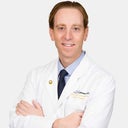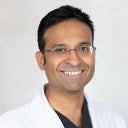I had alloderm put in to line my breast after a mastectomy. Just wanted to know how long it lives in my body before it dies if it does indeed die at some point
Answers (13)
From board-certified doctors and trusted medical professionals
Dr. Richard Baxter, MD

Dr. Richard Baxter, MD
Board Certified Plastic Surgeon
Answer
Dr. Steven J. Rottman, MD, FACS

Dr. Steven J. Rottman, MD, FACS
Board Certified Plastic Surgeon
Answer
Dr. Joel M. Stewart, Jr., MD

Dr. Joel M. Stewart, Jr., MD
Board Certified Plastic Surgeon
Answer
Dr. Keshav Magge, MD

Dr. Keshav Magge, MD
Board Certified Plastic Surgeon
Answer
Dr. Nelson Castillo, MD

Dr. Nelson Castillo, MD
Board Certified Plastic Surgeon
Answer
Dr. Ralph Trey Aquadro, MD

Dr. Ralph Trey Aquadro, MD
Board Certified Plastic Surgeon
Answer
Dr. Mark T. Boschert, MD
Dr. Mark T. Boschert, MD
Board Certified Plastic Surgeon
Answer
Dr. Tom J. Pousti, MD
Dr. Tom J. Pousti, MD
Board Certified Plastic Surgeon
Answer
Dr. Robert Whitfield, MD
Dr. Robert Whitfield, MD
Board Certified Plastic Surgeon
Answer
Dr. Rafael Gottenger, MD
Dr. Rafael Gottenger, MD
Board Certified Plastic Surgeon
Answer
More AlloDerm Questions
See all AlloDerm Q&AWE SEND PRETTY
EMAILS
What’s trending? Who’s turning heads? Which TikTok myths need busting? We’ve got you. No fluff, no gatekeeping—just real talk. Get our free, unfiltered newsletter.